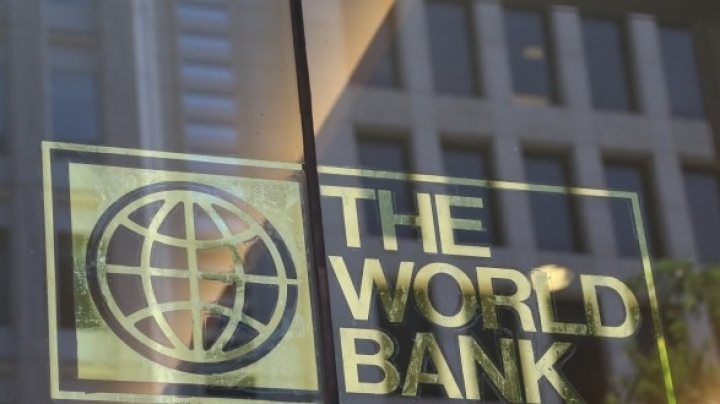World Bank welcomes converting emergency loans into state debt

Moldova is recovering from a recession, but growth is slow. After a recession in the second half of 2015, the economy grew at 1.3 percent year-on-year in the first half of 2016. Private consumption rebounded by 2.2 percent, partly supported by government transfers to households, while change in inventories added 4 percentage points (p.p.) to growth. Meanwhile, net exports subtracted 3 p.p. from growth due to weak external demand and stabilization of the exchange rate. Fixed investments continued to decline, by 6.7 percent, as real interest rates were high and public investment low, worldbank.org reports.
Consumer inflation is decelerating, allowing the National Bank to ease the monetary stance. With the dissipation of the pass-through effect from the depreciation, due to weaker internal demand, lower import prices and good agricultural yield, 12-month inflation has slowed from a peak of 13.6 percent in December 2015 to 3.6 percent in August 2016. In response, the NBM sharply reduced the base interest rate from a peak of 19.5 percent in September 2015 to 10 percent since July 2016.
The external position slightly improved due to lower imports. Lower import commodity prices and weak domestic demand compensated for the reduction in remittances, so that the current account deficit narrowed to 6.4 percent of GDP in the first half of 2016, 2.7 p. p. lower than last year. As a result, foreign reserves have grown to more than 5 months of imports.
Public finances are under pressure due to delays with external funding. The 2016 state budget law was adopted only in July, and it relies heavily on external support (from the EU, World Bank, Romania) to finance the planned deficit of 3.2 percent of GDP. In January-July, with low external financing available, spending decreased 8.3 percent in real terms, as most of the procurement and capital expenditure were stopped. The deficit was only 1 percent of GDP over the first seven months of 2016.
The poverty rates increased less than expected in 2015. The moderate poverty rate (5 USD/day, 2005 PPP) slightly increased to 41 percent in 2015. In the first quarter of 2016, however, the unemployment rate remained high, compounding the impact of high inflation and lower remittances on poverty. These effects have been partly offset by a decrease in food prices over the summer due to a good year in agriculture and by the indexation of pensions in April 2016.
Medium Term Outlook: We expect the economy to grow 2.2 percent in 2016, supported by the recovery in agriculture. The agricultural sector is likely to rebound in double-digits from last year’s drought-led contraction. Still high interest rates and political risks around presidential elections will keep investments subdued. An agreement with the IMF would unlock official external financing, and allow an increase in public expenditure within the deficit ceiling. Despite the projected increase in the price of utilities, consumer inflation is expected to remain within the target range of 5±1.5%. The current account deficit is projected to narrow to below 6 percent of GDP. Despite the tight fiscal situation, the real value of transfers to households is likely to be preserved. As a result, the moderate poverty headcount is projected to decline slightly to the level of 40.4 percent in 2016.
Moldova’s growth is expected to reach around 3 percent in 2017-2018. The base case assumes modest recovery in major trading partners, including Russia, and improved consumer and investor’s confidence, supported by an IMF program and the official financing from development partners. The fiscal deficit is projected to gradually decline to 2.5 percent of GDP to ensure fiscal sustainability, with debt to GDP ratio below 50 percent. The current account deficit will likely remain below historical average. As growth accelerates, poverty is expected to go down to 37.1 percent in 2017 and could reach 33 percent in 2018.
Moldova’s economic outlook is prone to considerable immediate challenges. On the back of a prolonged recession in Russia and uncertainty in Europe, macroeconomic and fiscal stabilization is an important short-term challenge. Moldova’s growth is slow, its public debt has recently increased to deal with the consequences of the banking fraud, so it has limited fiscal space. Restoring confidence is another major challenge. Following the public disclosure of the banking fraud, the authorities began to take steps to address the governance problems throughout the financial sector. However, more needs to be done to strengthen the independence, powers, and supervision capacity of the regulators (NBM and NCFM), and to ensure shareholder transparency and good corporate governance in financial institutions.
In the longer term, sustainable progress requires a rebalancing of the drivers of growth in Moldova. As the impact of remittances and public transfers moderates, this growth model needs to be increasingly driven by higher private sector growth and job creation. For this, as the Special Topic to this issue argues, the rule of law and the accountability of institutions should be strengthened, including in the financial sector, and the efficiency and equity of service delivery should be improved. Raising the quality, equity, and relevance of education and training systems is a top priority as well. Supporting priorities include reforming the social protection system, particularly pensions, improving the business regulatory framework, and ensuring sound macroeconomic and fiscal management.